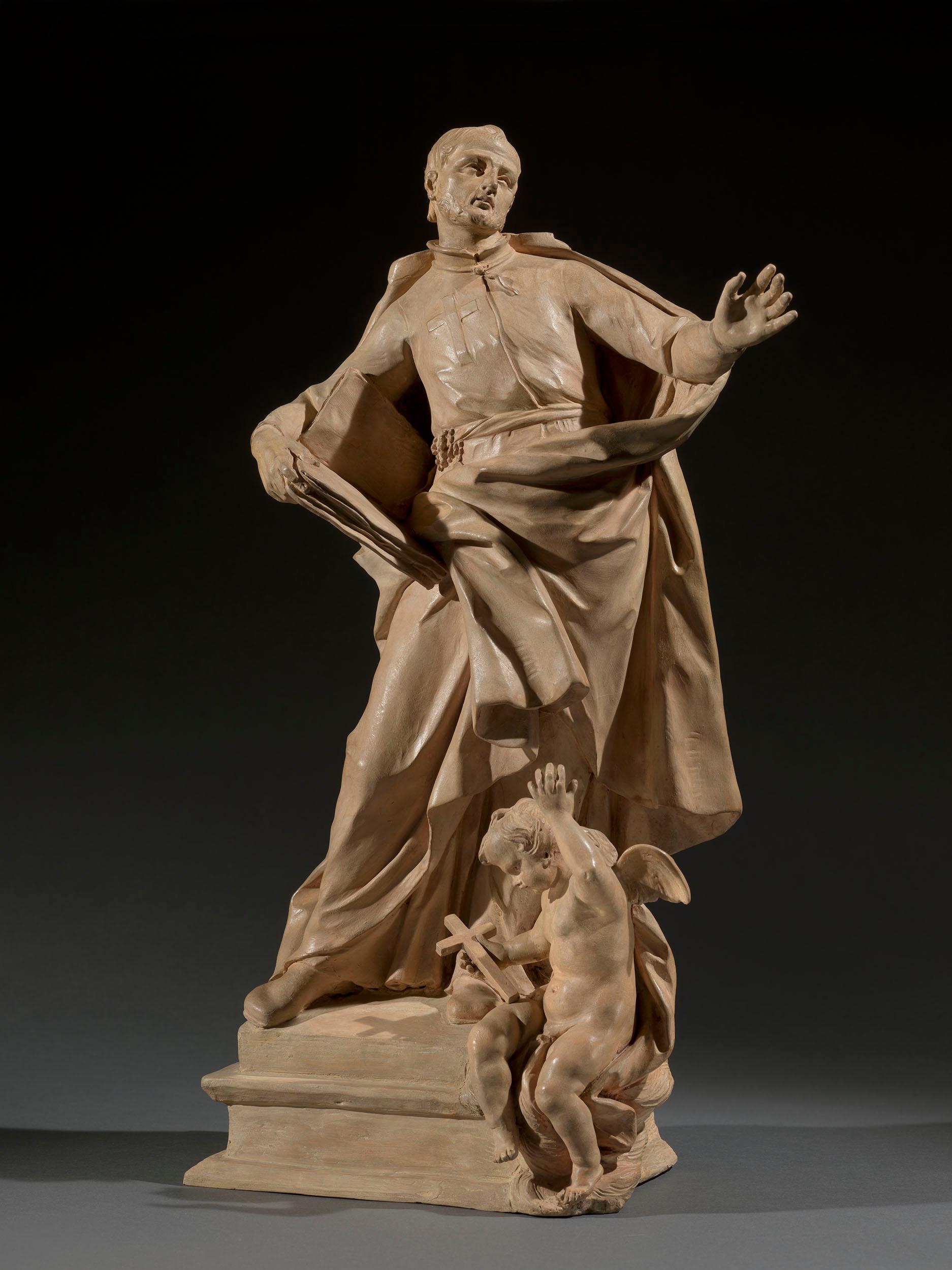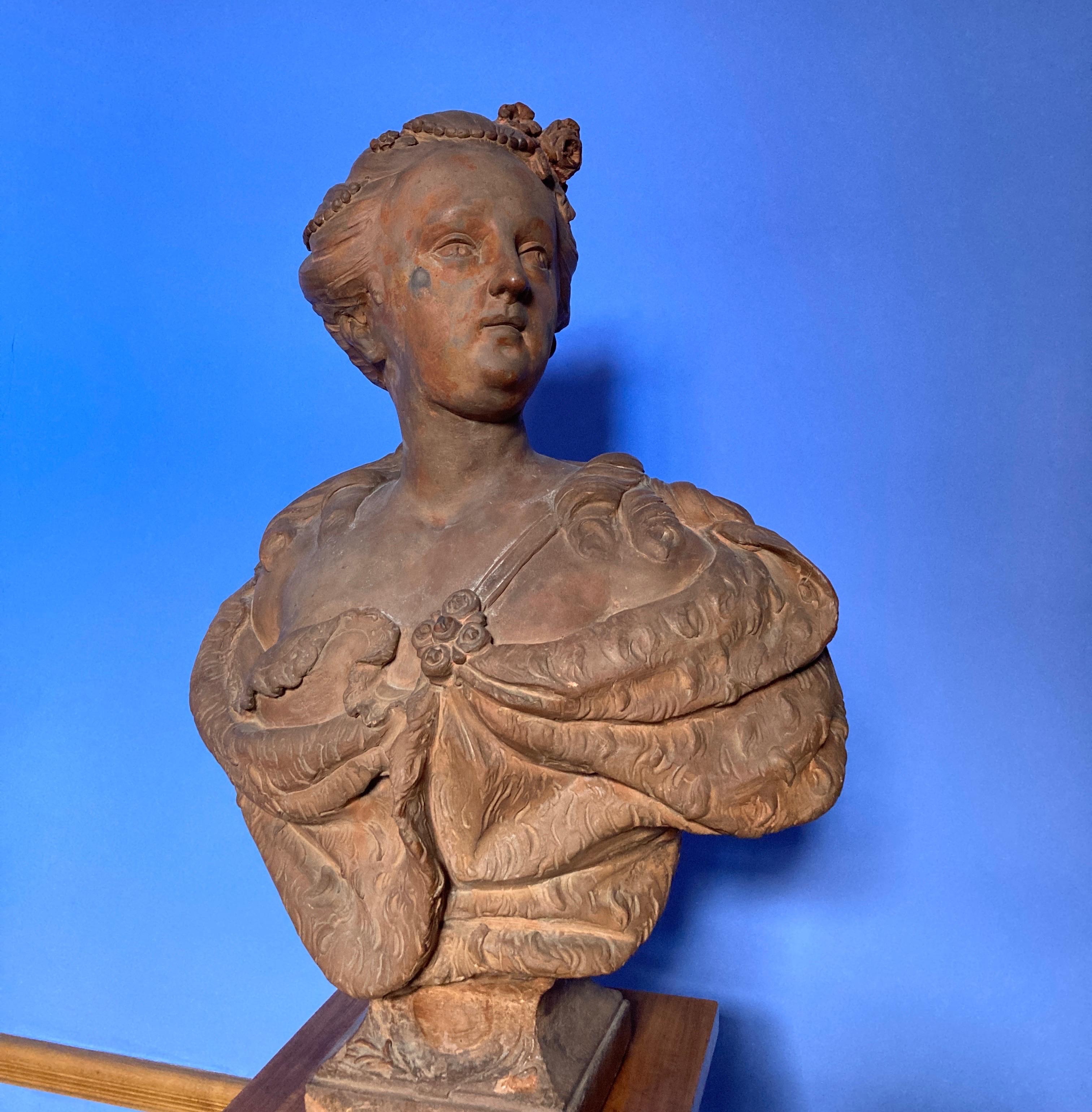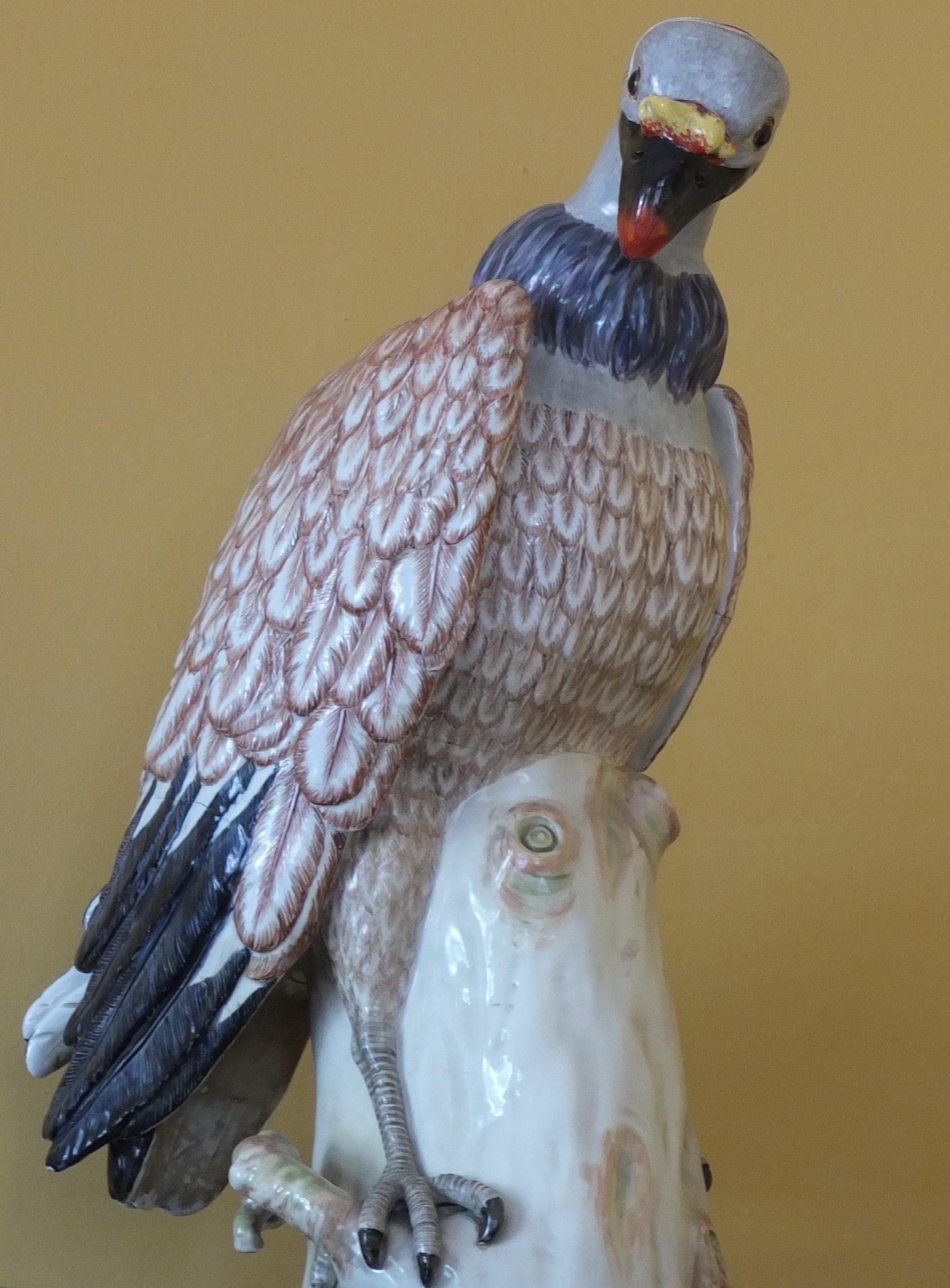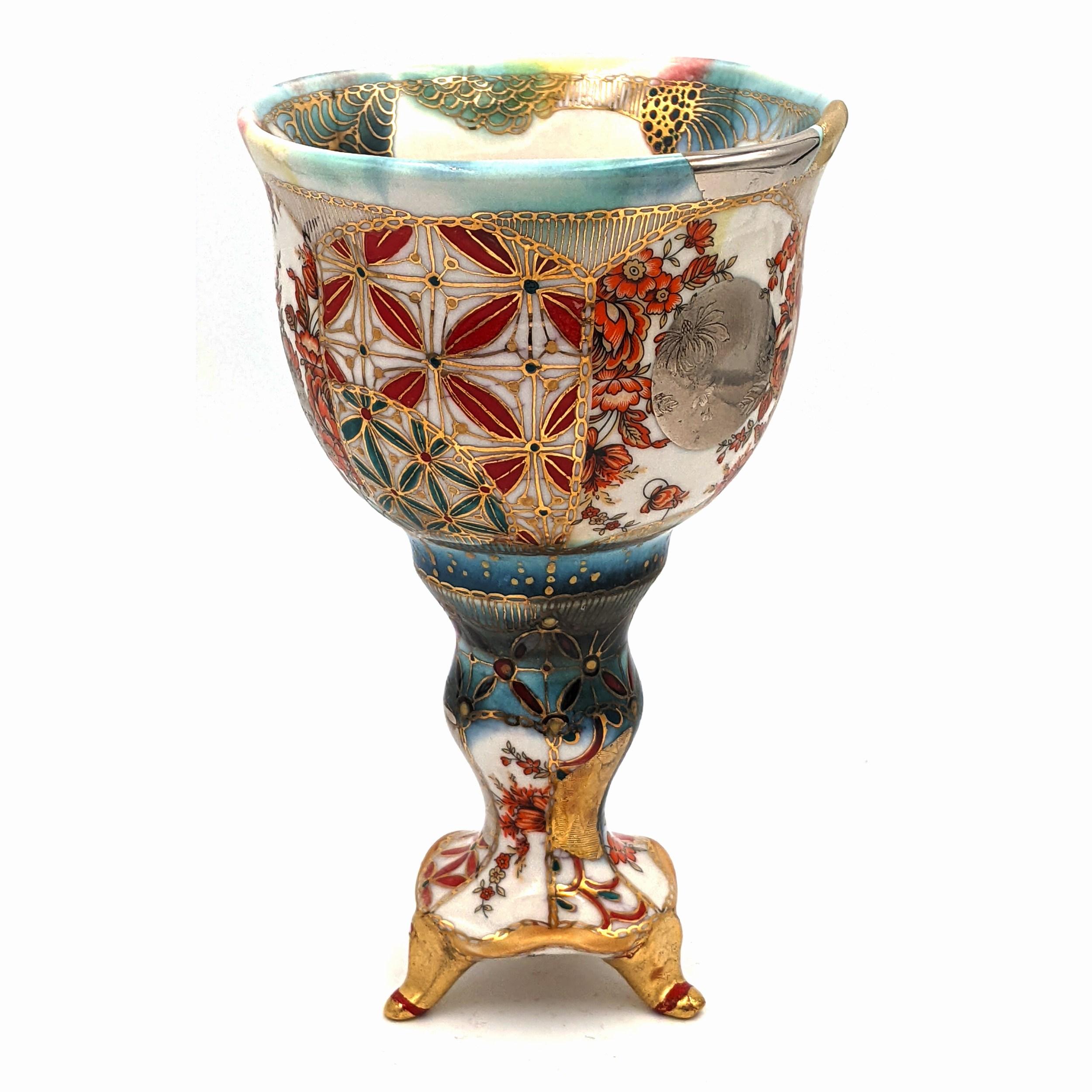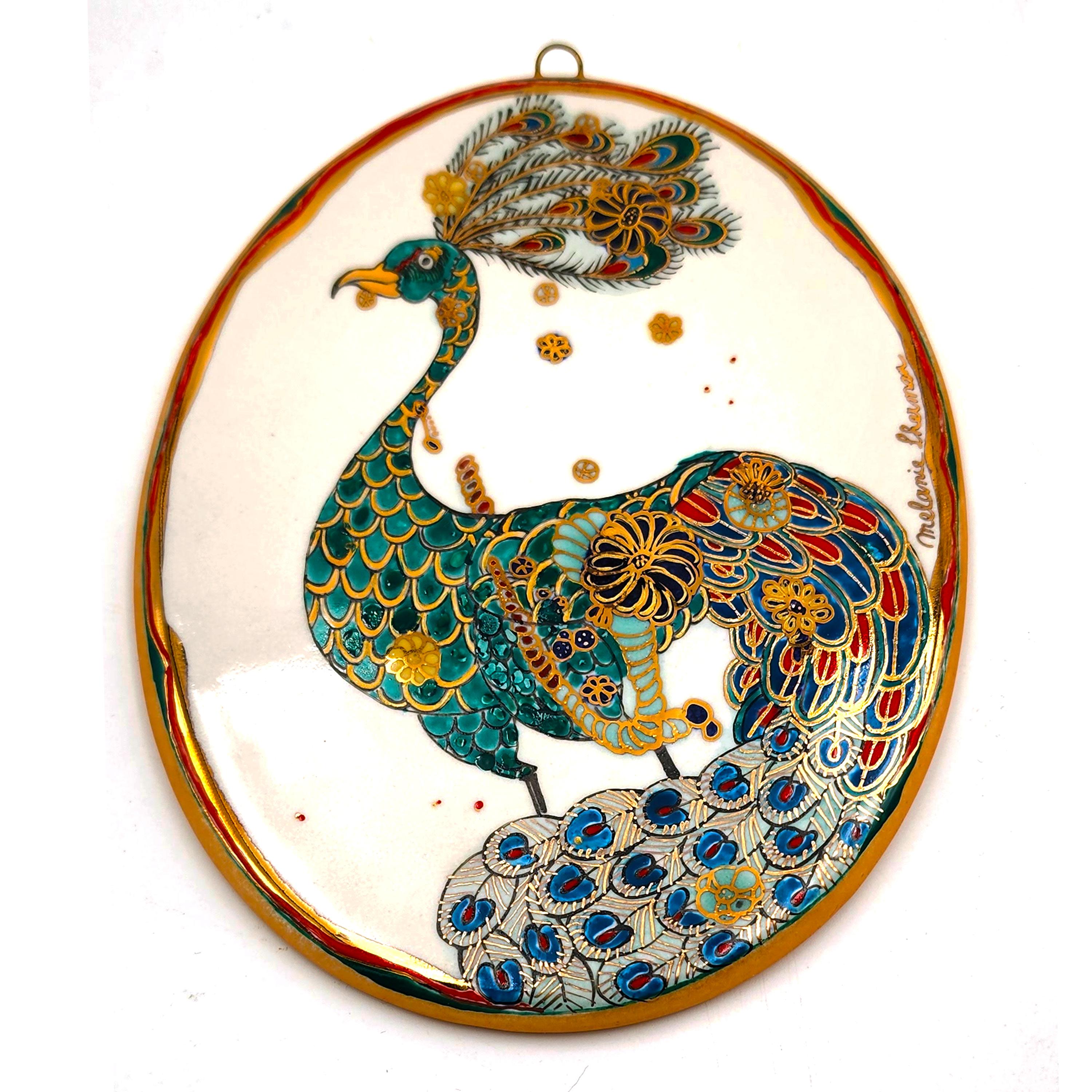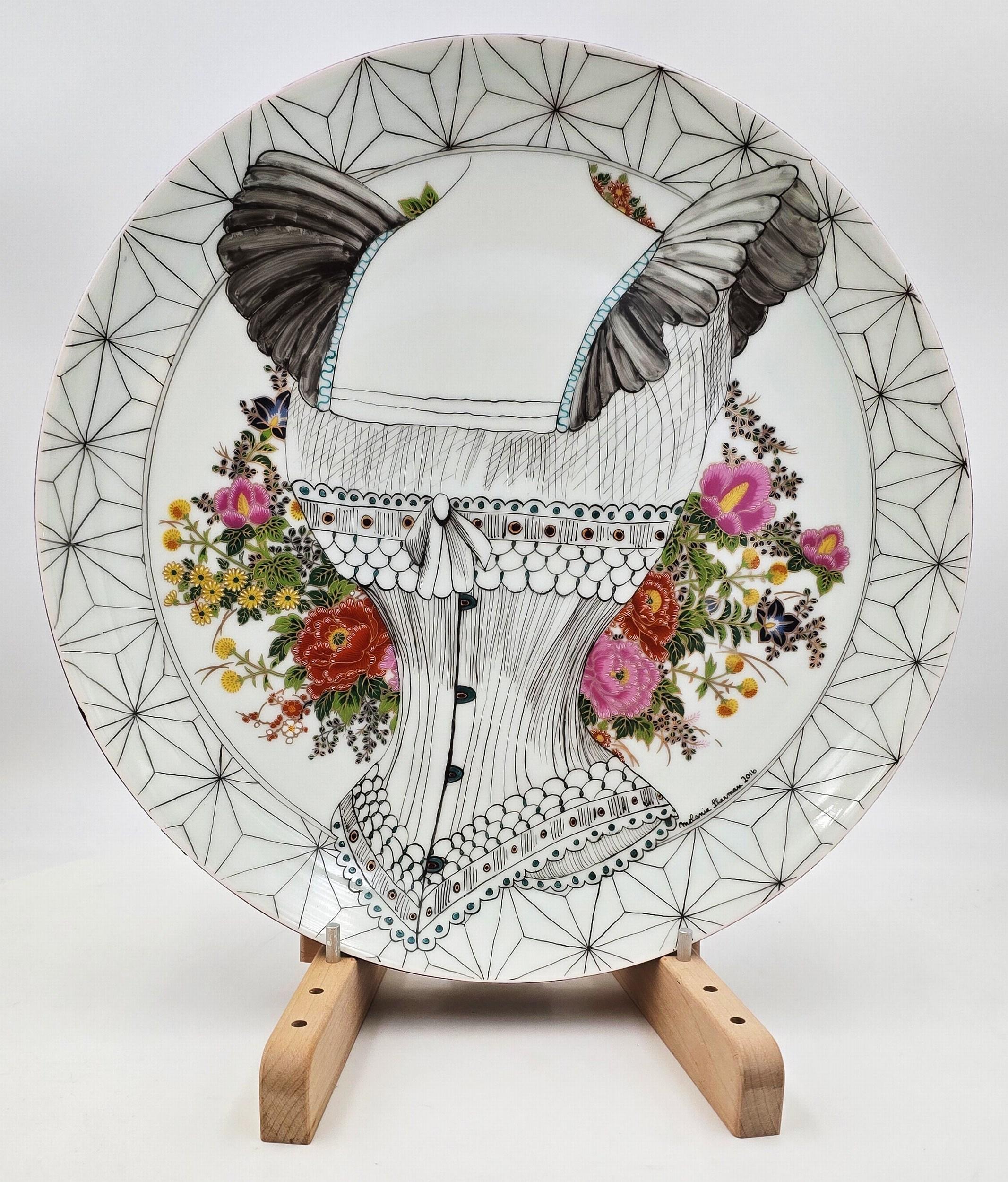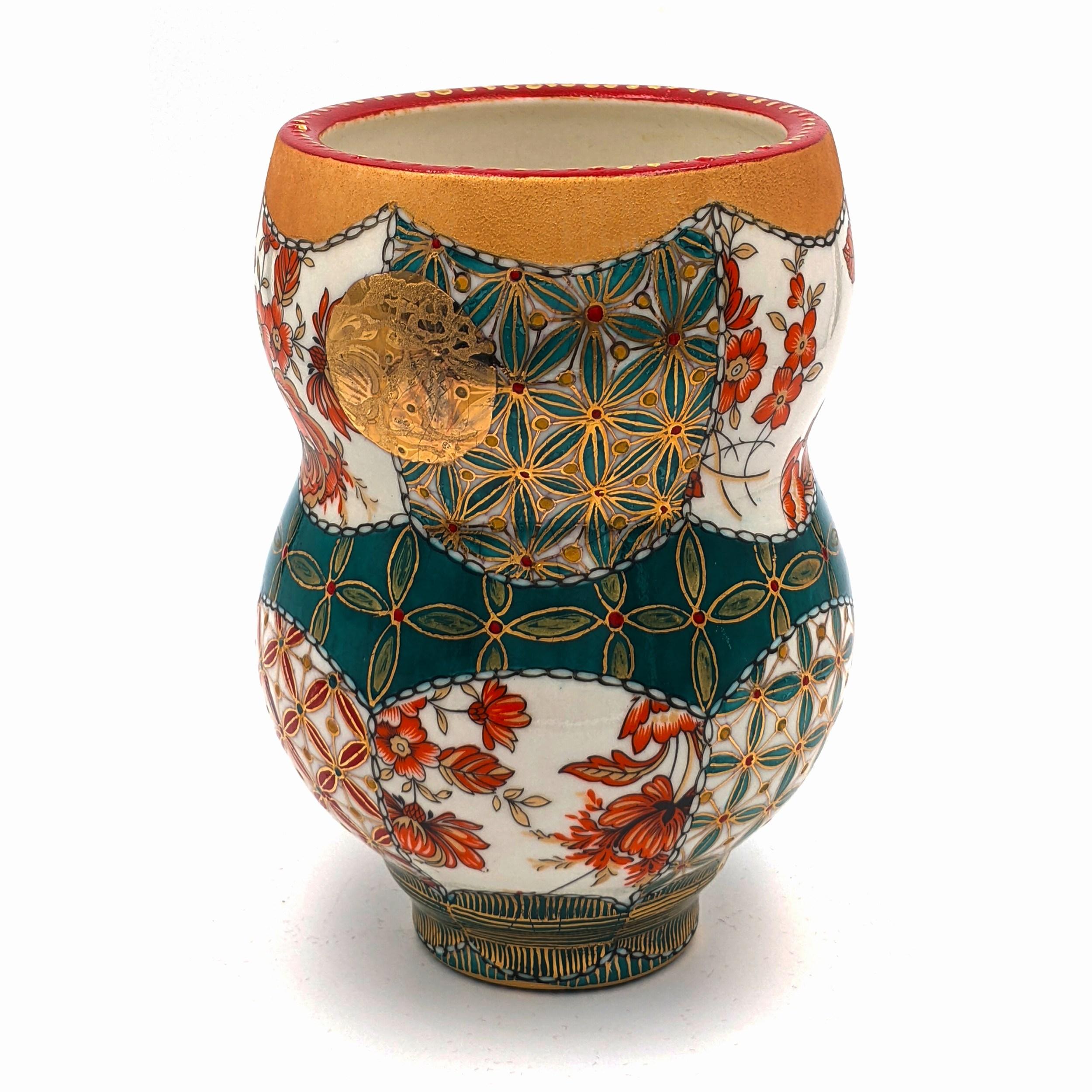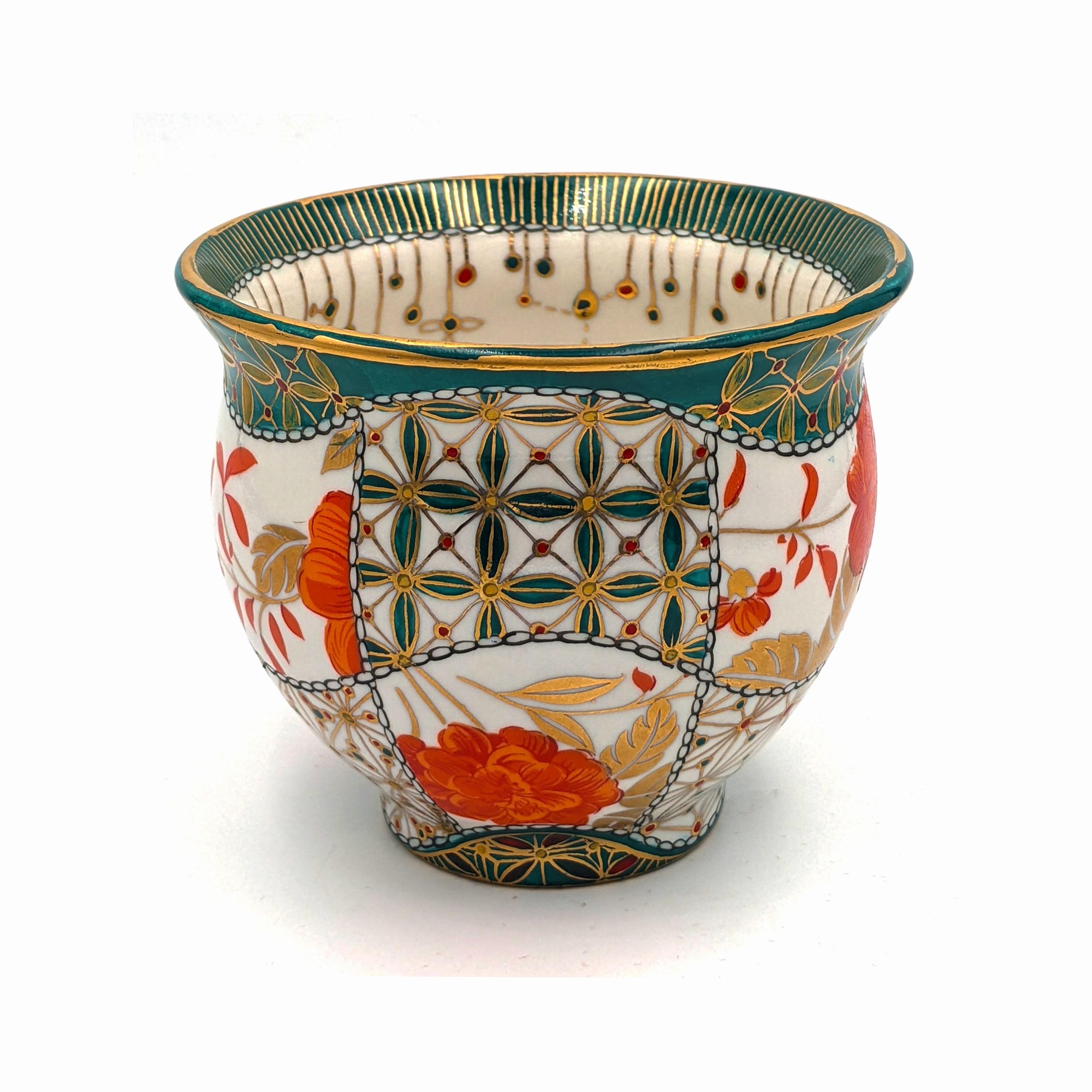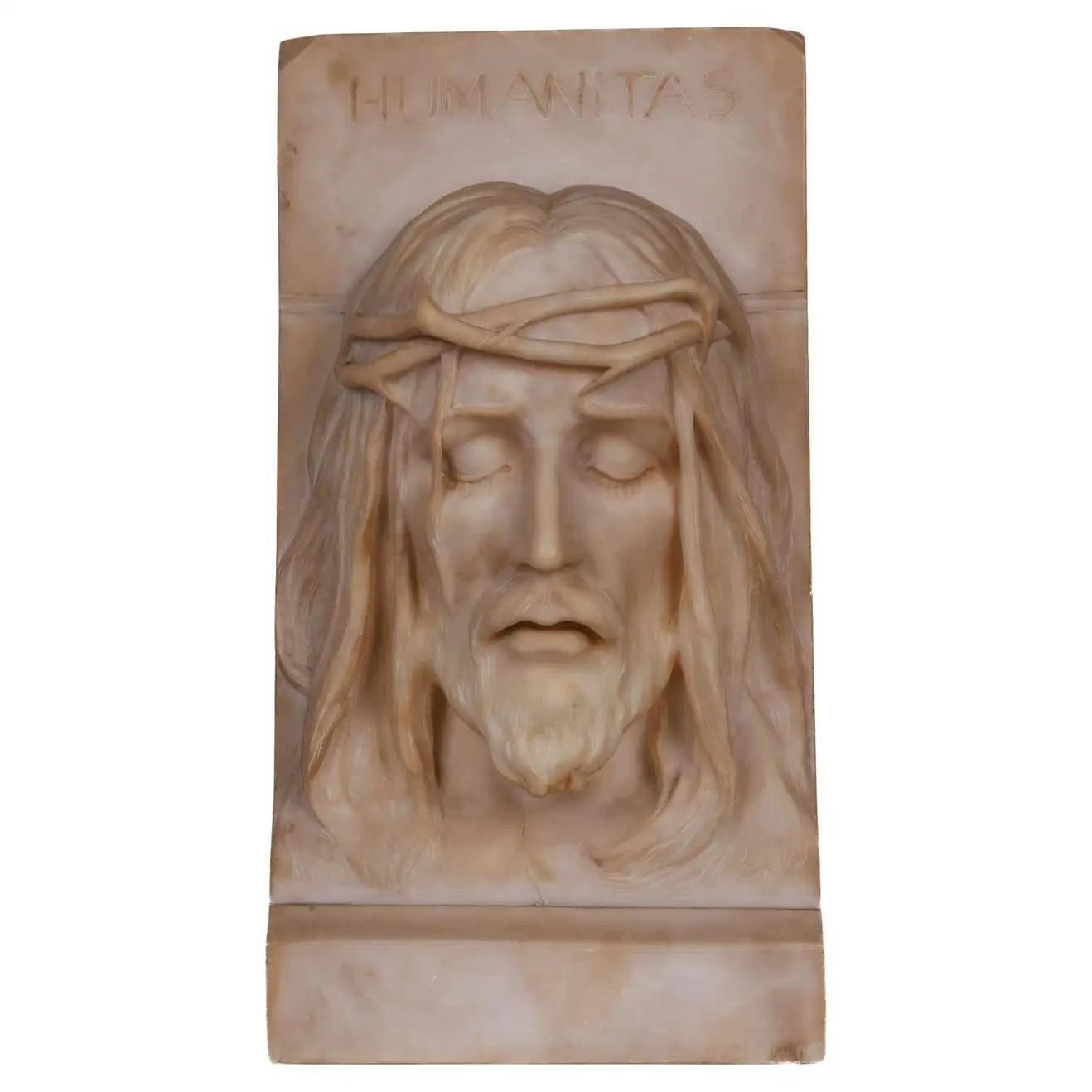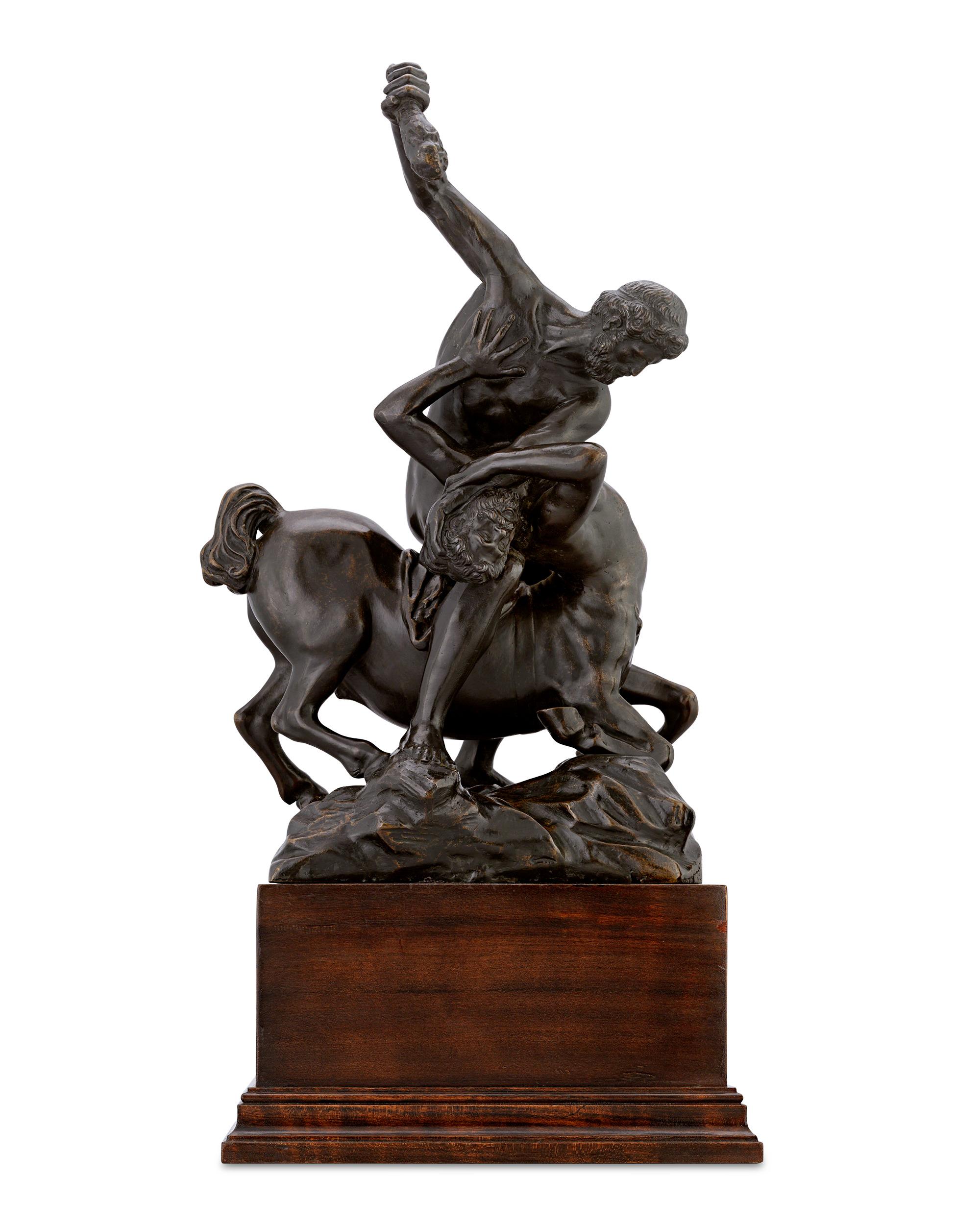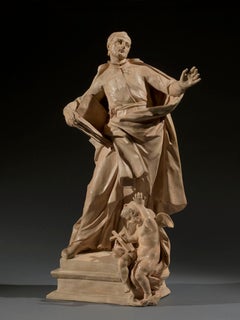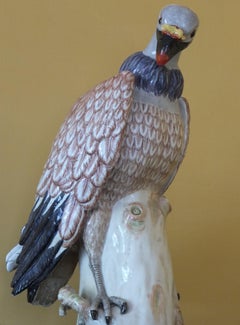
Early 19th century terracotta wall fountain
View Similar Items
1 of 3
UnknownEarly 19th century terracotta wall fountain
About the Item
- Dimensions:Height: 90.56 in (230 cm)Width: 43.31 in (110 cm)Depth: 17.72 in (45 cm)
- Medium:
- Movement & Style:
- Period:
- Condition:
- Gallery Location:LA BOUILLE, FR
- Reference Number:1stDibs: LU1808210498312
Authenticity Guarantee
In the unlikely event there’s an issue with an item’s authenticity, contact us within 1 year for a full refund. DetailsMoney-Back Guarantee
If your item is not as described, is damaged in transit, or does not arrive, contact us within 7 days for a full refund. Details24-Hour Cancellation
You have a 24-hour grace period in which to reconsider your purchase, with no questions asked.Vetted Professional Sellers
Our world-class sellers must adhere to strict standards for service and quality, maintaining the integrity of our listings.Price-Match Guarantee
If you find that a seller listed the same item for a lower price elsewhere, we’ll match it.Trusted Global Delivery
Our best-in-class carrier network provides specialized shipping options worldwide, including custom delivery.You May Also Like
Roman 18th century terracotta model for the sculpture of San Camillo de Lellis
Located in London, GB
This remarkably fluid terracotta bozetto was made in preparation for Pietro Pacilli’s most important public commission, a large-scale marble statue of San Camillo de Lellis for the nave of St Peter’s Basilica in Rome. Expressively modelled, this terracotta sculpture is a rare and significant work made by a major Roman sculptor at a transformative moment of European sculpture. Pacilli began his working life on the great Baroque decorative projects initiated in the seventeenth century, but he found success as a restorer of ancient sculpture working to finish antiquities for a tourist market, becoming an important figure in the emergence of an archaeologically minded Neoclassicism. Pacilli trained Vincenzo Pacetti and provided important decorative work for the Museo Pio-Clementino, at the same time he is recorded restoring some of the most celebrated antiquities excavated and exported during the period.
Pacilli was born into a family of Roman craftsmen, his father Carlo was a wood carver, and Pacilli is recorded working with him on the Corsini Chapel in San Giovanni Laternao as early as 1735. In 1738 his terracotta model of Joseph and Potiphar’s Wife won the first prize in the second class of the sculpture concorso at the Accademia di San Luca, this is particularly notable as Bartolomeo Cavaceppi came third. He worked as a carver and stuccoist completing works for the churches of San Marco and SS. Trinita dei Domeniciani Spagnoli. Pacilli operated as a sculptor and restorer of antiquities from his studio at the top of the Spanish Steps, close to Santa Trinita dei Monti, where he is listed as a potential vendor to the Museo Pio-Clementino in 1770.
In 1763 Pacilli completed a silver figure of San Venanzio for the treasury of San Venanzio. He is recorded as Pacetti’s first master and it was evidently through Pacilli that he began to acquire his facility as a restorer of ancient sculpture. Pacilli, at his studio ‘poco prima dell’Arco della Regina alla Trinita dei Monti,’ exercised, what the nineteenth-century scholar, Adolf Michaelis called ‘rejuvenating arts’ on several important pieces of classical sculpture, including in 1760 the group of a Satyr with a Flute for the natural brother of George III, General Wallmoden, Hanovarian minister at Vienna. In 1765, Dallaway and Michaelis record that Pacilli was responsible for the restorations, including the addition of a new head, to the Barberini Venus which he had acquired from Gavin Hamilton. The Venus was then sold to Thomas Jenkins, who in turn passed it on to William Weddell at Newby Hall. In 1767 Pacilli exported a series of ancient busts ‘al naturale’ including portraits of Antinous, Julius Ceaser and Marus Aurelius, also a statue of a Muse and a Venus. As early as 1756 Pacilli seems to have been operating as an antiquarian, helping to disperse the collection of the Villa Borrioni. Pacilli supplied sculpture to notable British collectors, including Charles Townley, who on his first trip to Italy purchased the Palazzo Giustiniani statue of Hecate from Pacilli. Pacilli was involved with the Museo Pio Clementino from its conception, supplying busts of Julius Ceaser and a Roman Woman as well as completing stucco putti surmounting the arms of Pope Bendedict XIV to signal the entrance to the new Museo Critiano.
In 1750 Il Diario Ordinario del Chracas announced that Pacilli had begun work on a sculpture of San Camillo de Lellis for St Peter’s. Camillo de Lellis founded his congregation, the Camillians, with their distinctive red felt crosses stitched on black habits in 1591. Having served as a soldier in the Venetian army, Camillo de Lellis became a novitiate of the Capuchin friars, he moved to Rome and established a religious community for the purpose of caring for the sick. In 1586 Pope Sixtus V formerly recognised the Camillians and assigned them to the Church of Santa Maria Maddalena in Rome. Camillo de Lellis died in 1614 and was entombed at Santa Maria Maddalena, he was canonised by Benedict XIV on June 26, 1746. It was an occasion that prompted the Camillians to make a number of significant artistic commissions, including two canvases by Pierre Subleyras showing episodes from San Camillo’s life which they presented to Benedict XIV. In 1750 Pacilli was commissioned to fill one of the large niches on the north wall of the nave with a sculpture of San Camillo.
The present terracotta bozetto presumably had two important functions, to enable Pacilli to work out his ideas for the finished sculpture and at the same time to show his design to the various commissioning bodies. In this case it would have been Cardinal Alessandro Albani and Monsignor Giovan Francesco Olivieri, the ‘economo’ or treasurer of the fabric of St Peter’s. Previously unrecorded, this terracotta relates to a smaller, less finished model which has recently been identified as being Pacilli’s first idea for his statue of San Camillo. Preserved in Palazzo Venezia, in Rome, the terracotta shows San Camillo with his left hand clutching his vestments to his breast; the pose and action more deliberate and contained than the finished sculpture. In producing the present terracotta Pacilli has expanded and energised the figure. San Camillo is shown with his left hand extended, his head turned to the right, apparently in an attempt to look east down the nave of St Peter’s. The model shows Pacilli experimenting with San Camillo’s costume; prominently on his breast is the red cross of his order, whilst a sense of animation is injected into the figure through the billowing cloak which is pulled across the saint’s projecting right leg. The power of the restrained, axial contrapposto of bent right leg and outstretched left arm, is diminished in the final sculpture where a baroque fussiness is introduced to the drapery. What Pacilli’s terracotta demonstrates, is that he conceived the figure of San Camillo very much in line with the immediate tradition of depicting single figures in St Peter’s; the rhetorical gesture of dynamic saint, arm outstretched, book in hand, head pointed upwards was perhaps borrowed from Camillo Rusconi’s 1733 sculpture of St. Ignatius...
Category
18th Century Baroque Figurative Sculptures
Materials
Terracotta
Bust of a Lady, prob Queen Elisabeth Petrowna, Terracotta Sculpture, Baroque Art
Located in Greven, DE
Bust of a Lady, thought to be Elisabeth Petrowna, also known as Elisabeth of Russia
Depicted before she was crowned
Terracotta Bust
Elizabeth Petrovna (Russian: Елизаве́та (29 Decem...
Category
18th Century Baroque Figurative Sculptures
Materials
Terracotta
French School of the 17th century Large Group in Terracotta
Located in Pistoia, IT
Large terracotta group depicting interior scene, northern France, second half of the 17th century.
The fine execution of this delightful family interior takes us back to the product...
Category
Late 17th Century Baroque Figurative Sculptures
Materials
Terracotta
Kaendler, Great King Vulture, Model, 1734, Porcelain, Meissen, Animal
Located in Greven, DE
Great king vulture on tree trunk
Porcelain,
Model by J.J. Kaendler 1734. This present porcelain sculpture was made after the model by Kaendler, in the 19th or 20th Century. There are no visible marks.
Kaendler and Porcelain:
Dresden in the 18th century owed its Europe-wide fame as a centre of courtly splendour to the elector Frederick Augustus I (1670-1733). 'August the Strong' had a distinct passion for collecting and was not only a patron and lover of the arts, but also an enthusiastic patron of science. His natural history cabinet was regarded as the most important collection of its kind in Europe and contained a large number of exotic animals. He financed expeditions, from which the researchers were to bring the 'most possible species of their animals alive or in skins and skeletons or even crushed' back to Dresden. Johann Joachim Kaendler had this extensive collection of partly living exhibits at his disposal when he was commissioned to design life-sized animal sculptures for the 'Japanese Palace...
Category
19th Century Baroque Still-life Sculptures
Materials
Porcelain
$8,766 Sale Price
30% Off
Just A Little Tipsy (MADE TO ORDER) (Sabbath, Kiddush, Unique, Gold Luster)
By Melanie Sherman
Located in Kansas City, MO
(MADE TO ORDER) (Sabbath, Kiddush, Unique, Gold Luster)
*Lead Time may vary between 1-3 weeks
Melanie Sherman
"Just A Little Tipsy"
Year: 2021
Porcelain, Glaze, ChinaPaint, 24k Germ...
Category
Late 17th Century Baroque Sculptures
Materials
Luster, Porcelain, Glaze
Vintage Peacock III (Wall Piece/Dish (hand-painted, made to order by the artist)
By Melanie Sherman
Located in Kansas City, MO
Melanie Sherman
Vintage Peacock III (Wall Piece/Dish (handpainted)
Porcelain, Glaze, Overglaze, Chinapaints, 24k German Gold Luster, Brass Wire (for hanging, can be removed)
Year: 2023 (and following years)
Size: 5.5x4x0.25in
Signed by hand
COA provided
Ref.: 924802-1333
*Made to Order Every piece is unique, design might differ slightly Customization possible
**Lead time approx. 2 weeks for qty 1-3
------------------------
My ceramics are handmade and painted with the finest overglazes from Europe. The gold luster used is 24k liquid Gold from Germany. Every piece is unique. My imagery is inspired by vintage Meissen dinnerware, William Morris wallpaper and other historical sources.
Porcelain, Ceramics, Pottery, Ornament
Vintage Moth Wall Piece Ornament Small Dish Candy Sugar Tea handpainted handmade butterfly peacock 24k German gold luster ceramics porcelain charm, jewelry, personalized, family, tree, retro, heart, mother, moon, baby, feet, gemstone, flower, mom, birth, year, art, chinapaint, luster, lustre, contemporary ceramics, futility of pleasure, herend, meissen, sevre, pattern, arita, arita ware, imari, imari ware, dresden, germany, japan, jingdezhen, china, photography, momento mori, flowers, flower motif, drawing, illustration, peacock, cherry blossom, chrysanthemum, kiku, 菊, kikka, 菊花, Ōka, 黄花, Kiku no hana...
Category
1790s Baroque Sculptures
Materials
Brass
